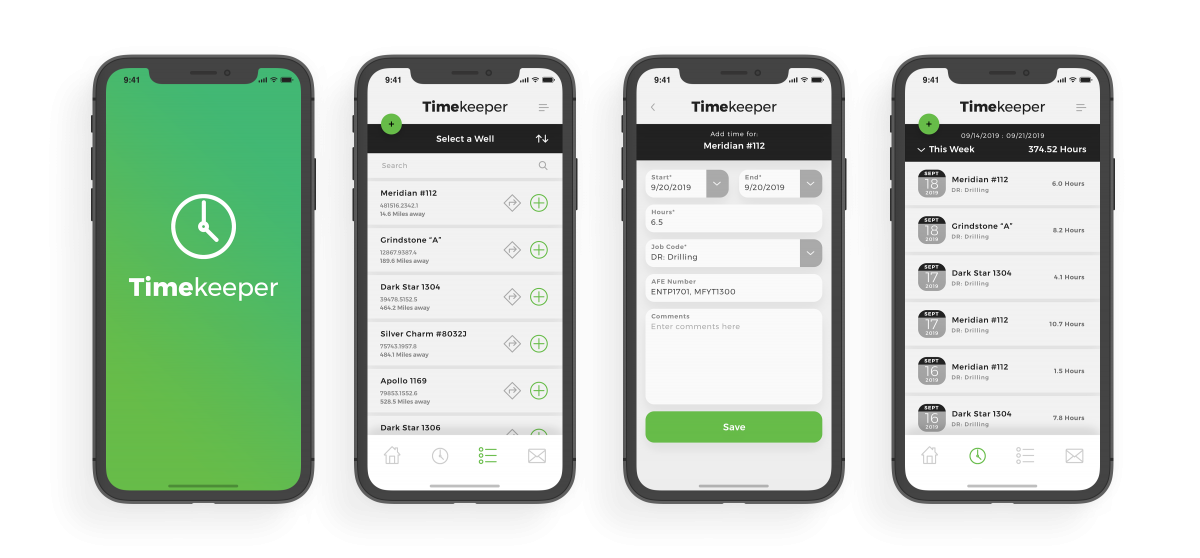The problem
Our client, a leader in oil and gas exploration and production, was manually recording location and hours worked on-site for monthly cost reporting. Field employees had to individually track hours worked at each oil well location before manually entering data into a spreadsheet shared with accounting at the end of the month for cost analysis. The process was complex and time consuming for multiple teams, resulting in higher potential for errors, inaccurate information sent to decision makers, and difficulty forecasting activity costs.
The Blueprint Way

Utilizing Microsoft’s robust Power Apps platform, Blueprint developed Timekeeper: an app experience deployed on users’ mobile devices to record data quickly and easily in the field and automate reporting.

The Timekeeper app puts powerful features in the palm of employees’ hands. Users can quickly and easily enter time worked at a given well with all information required on a single screen, including dates, job code, and comments. Oil well search functionality allows users to search through all wells and uses GPS location to sort by distance from the current device, based on the latitude and longitude of each well. Timekeeper records and stores field data immediately upon save and submit and acts as a visual record for dates and hours worked. At the end of the month, the app consolidates that data and automatically calculates costs for reporting.

